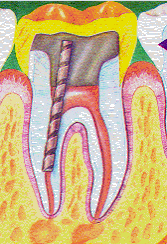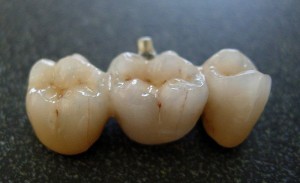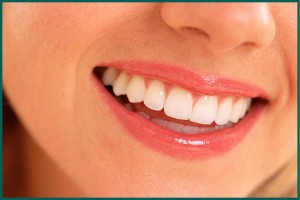Dentistry is a very subjective area where a wide range of treatment such as dental bridge or a post is readily available to suit your needs. This can present challenges for both the dental practitioner and the patient in deciding which treatment option suits the patient best, taking into account the advantages, disadvantages, time and cost required to achieve desired results. As the dental practitioner may have very different opinion as to what is ideal, you being the patient need to clearly express your needs to the dentist and have a good discussion to avoid any misunderstandings and setting down reasonable and realistic expectations.
Why does a tooth needs a dental bridge or a post?
Often when a tooth is very broken down, there are several options to manage such tooth. Not pursuing with treatment is always an option, though always not recommended especially when associated with large areas of dental decay and the potential of infection. Another option is to place pins or post into the tooth. The former consist of small screws that are manually drilled onto the tooth while the later is an alloy post that is cemented into the root canal, hence the tooth will need to have been nerve or root canal treated prior to post insertion. Placement of pins or post will provide more retention and anchorage for the dental restoration. The last option is to extract the tooth. After extraction, a gap will be present and this can be replaced if desired. There are several options to replace a missing tooth, such as bridge, dentures or dental implants.
What is a post?

Placement of post inside root canal
In this article, we are only going to discuss the two main options: post and dental bridge. Aforementioned, a post is placed straight into a root canal quite deeply and sits right on top of base of gutta percha, the most commonly used root filling material. There are two general methods of doing post: direct and indirect. Direct post involves chair side post-hole preparation and placement while an indirect post requires external input from a dental technician who will fabricate and cast the post based on the impression provided by the dentist. This post is customized to the tooth itself and is cemented the same way as a direct post. The former option is more time consuming and requires longer visit as compared to the latter. Direct post also cost less but does not have the benefit of being customized to the root canal.
Posts in general are very useful in helping to build up the core of a dental restoration on a heavily broken down tooth as it has a retentive head and is embedded into the root canal. Dental crowns are commonly placed on top of posts. The main disadvantage of a post is that it can fail and that is not uncommon. The failure is often not because of the post, but rather the tooth itself as the tooth can often split right through the root. At this state, the tooth is not salvageable and must be extracted. Conventional belief that a post strengthens the tooth is misleading because whilst the steel appears to reinforcing the tooth, it actually places more stress on the tooth structure especially during function, and the rigidity of posts often makes the problem worse. Recent innovations have come up with fiber posts, which can supposedly disperse stress better due to its enhanced flexibility, but more research is required to prove its claims.
What is a dental bridge?

Three unit dental bridge
Dental bridge as mentioned before is used to replace missing teeth where it is consist of a pontic or replacement tooth usually attached to one or two adjacent teeth (referred to as abutments) via full dental crowns. This is normally the preferable method to dentures because it is a fixed dental prosthesis in the mouth and does not take up a lot of spaces inside the mouth. Although dental bridge works well functionally and aesthetically, it does have limitations such as its high cost and can be prone to failure especially in cases where planning has not been done thoroughly. It may also be unsuitable if the gap to be replaced is too long and/or if the abutment teeth supporting the pontic have poor prognosis. This method is also quite destructive to the abutment teeth structure as full coronal coverage is required. Hence dental bridge is generally not recommended if both adjacent teeth are virgin teeth due to the costly amount of reduction to normal tooth structure that is involved.
Dental bridge vs post: Which one is better?
As discussed above, both post and dental bridge have its place in terms of advantages and disadvantages but these needs to be considered and consulted with your dentist because each case is different. The prognosis of the teeth is of utmost importance as well as the financial cost you are willing to bear. The treatment plan should be tailored to your needs so it is inappropriate to assume that a bridge or a post that works well in your family member or friend will be the same for you. It is the best to have thorough discussions with your dentist and decide accordingly.
